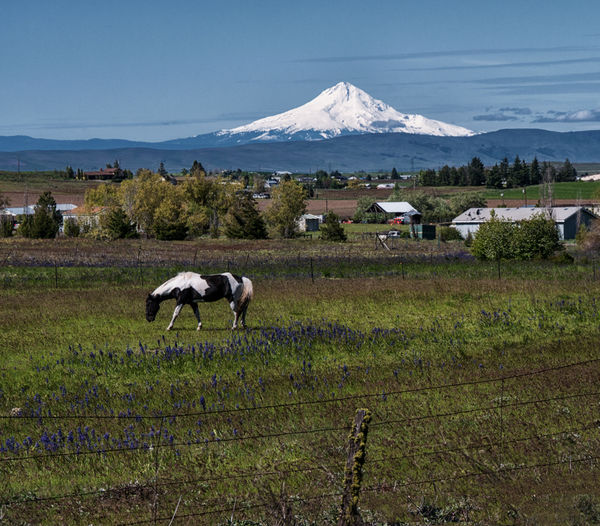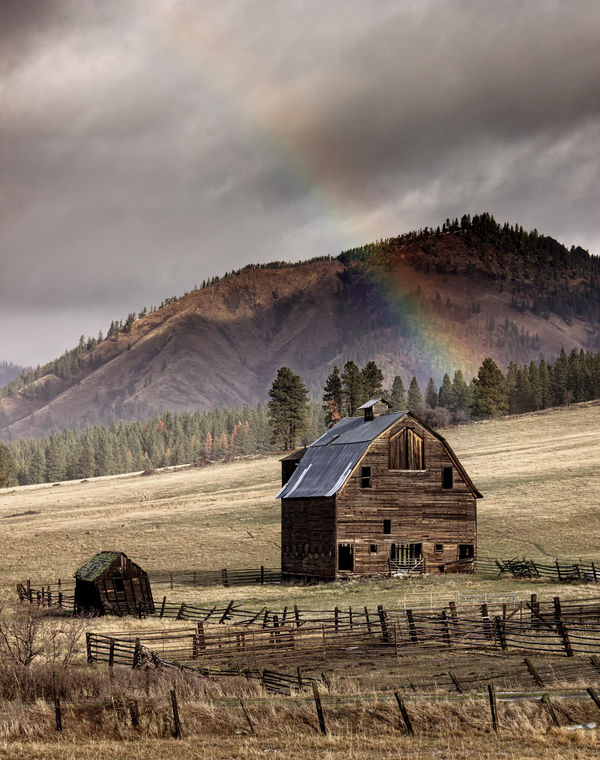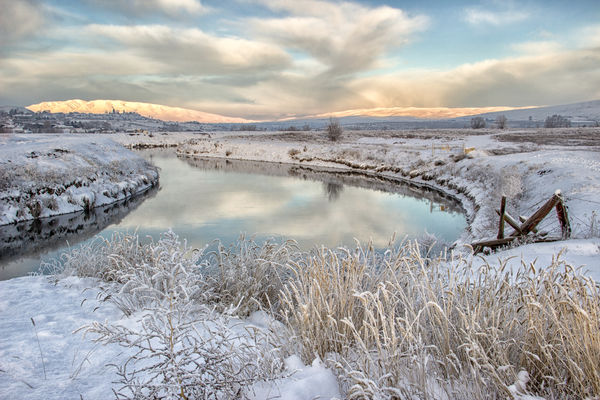"shooting layers"
Aug 4, 2018 08:12:27 #
Currently muddling through and article on Flipboard by Eric Kim about "shooting layers". I've never heard layers used in this context. Anybody know what "shooting layers" is or means?
Aug 4, 2018 08:28:32 #
With landscapes, you compose for elements in foreground, middle and distance in order to keep the viewer interested and their eyes moving through the frame. Can you provide a link to the article? Below is link to another article that mentions layers in this context:
https://photographylife.com/whats-important-in-a-photograph-and-what-isnt
-
https://photographylife.com/whats-important-in-a-photograph-and-what-isnt
-
Aug 4, 2018 09:01:44 #
Larz wrote:
Currently muddling through and article on Flipboard by Eric Kim about "shooting layers". I've never heard layers used in this context. Anybody know what "shooting layers" is or means?
Layered composition applies to various genres of photography, but Eric Kim discusses it in relation to Street Photography. It could be called a "Rule Of Thumb" in much the same way as the "Rule Of Thirds".
Here are three URLs to articles by Eric Kim discussing how to layer Street Photography compositions.
http://erickimphotography.com/blog/2016/09/30/how-to-shoot-layers-in-street-photography/
http://erickimphotography.com/blog/2018/04/25/how-to-shoot-layers-and-the-bookend-technique-in-street-photography/
http://erickimphotography.com/blog/2018/08/03/how-to-shoot-layers/
Layered composition amounts to composing an image with objects that separate the viewer's mental response into distinct "layers" that are unrelated. An example would be negative space to the left and right of a main subject. But it can also be well occupied space that is just visually distinct from the main subject. A group of interesting people in the center with part of a building to the left and perhaps a telephone pole on the right.
The right and left objects are "bookends", and generally would be less detailed and less interesting than the centered subject.
Aug 4, 2018 09:48:02 #
Thank you for your responses. I understand it a bit better now. I'm sure the way Kim described it is legit but to me it seemed a convoluted East Village way of saying "set your depth of field to capture what you want in focus".
Aug 4, 2018 09:54:31 #
Larz wrote:
Thank you for your responses. I understand it a bit better now. I'm sure the way Kim described it is legit but to me it seemed a convoluted East Village way of saying "set your depth of field to capture what you want in focus".
Depth of Field is not the point.
COMPOSITION is! It is what you have within the Field Of View, and how each object relates, in terms of perspective, to all other objects.
Aug 4, 2018 09:56:32 #
Apaflo wrote:
Well said, clear and concise.Depth of Field is not the point. COMPOSITION is! It is what you have within the Field Of View, and how each object relates, in terms of perspective, to all other objects.
UHH's Graham Smith is a master:
https://www.uglyhedgehog.com/t-459422-1.html
https://www.uglyhedgehog.com/t-527757-1.html
To the OP: check the two sections on UHH devoted to street, if that's where your main interest lies:
https://www.uglyhedgehog.com/all-section-list
-
Aug 4, 2018 10:15:20 #
Apaflo wrote:
Depth of Field is not the point.
COMPOSITION is! It is what you have within the Field Of View, and how each object relates, in terms of perspective, to all other objects.
COMPOSITION is! It is what you have within the Field Of View, and how each object relates, in terms of perspective, to all other objects.
It's one of the points. Maybe you missed, "For the person in the foreground, you want them to be out-of-focus. Why? This gives you an illusion of depth."
Kim compares street photography to fishing. He does not suggest that you should overthink each shot. Most of your street images are going to get discarded anyhow.
He is talking about dissecting and analyzing results after taking many images to help separate the winners from the losers.
There are very few useful rules that can be deliberately applied to taking an image, especially street snaps.
Aug 4, 2018 10:22:52 #
I once heard a talk by a National Geographic photographer who spoke of using this technique. From the perspective of street, documentary or travel photography it is the compositional technique of having other items of interest in the photo that help place the event, fill out the story or give context to the photo. An example might be a photo of a fruit vendor at their stand in a market with a potential customer walking by, another worker in the background bringing a basket of fruit to the vendor, the fruit with a price sign, and a bit of the awning with a name above. Such a photo would tell much more of the story than just a close up of the vendor and a few pieces of fruit. Not everything except the subject need be in perfect focus. Just enough to be able to discern what it is or what is happening.
Aug 4, 2018 10:37:02 #
Thanks everyone, i don't mean to make it sound like I'm dissing it. I had zero understanding of it and the article lacked an explaination or into. I get it now. Thanks.
Aug 4, 2018 10:45:30 #
birdpix wrote:
I once heard a talk by a National Geographic photo... (show quote)
Good explanation; I don't generally shoot street photography but this would certainly help if I were to do that.
Aug 4, 2018 10:48:07 #
selmslie wrote:
It's one of the points. Maybe you missed, "F... (show quote)
You don't appear to have understood the articles by Eric Kim, and take the one and only reference to narrowing DOF, in only one specific shot, totally out of context. Likewise the idea that shooting in layers is NOT about shooting at all, but rather about later analysis for culling is too ingenious to put it mildly.
Eric Kim absolutely is talking about how to compose while you shoot. Generally using wide angle lenses and putting effort into more DOF and not less.
Read all three of the cited articles and perhaps in your case doing additional Google research for even more of Eric Kim's articles on this subject would be required.
Aug 4, 2018 10:49:18 #
Aug 4, 2018 10:59:26 #
Larz wrote:
Thanks everyone, i don't mean to make it sound like I'm dissing it. I had zero understanding of it and the article lacked an explaination or into. I get it now. Thanks.
Your bewilderment is understandable. The term implies that "shooting layers" is a technique you can apply deliberately when taking the image. A more appropriate term is probably "recognizing layers" which is something you can do with an image that already exists.
There are a couple of UHH sections where people are happy to suggest how to improve an image after it has been taken by cropping it or editing the posted JPEG. You seldom see the suggestion to simply go back and retake the picture with different settings, lens or viewpoint.
It would be more helpful if people concentrated on suggestions to optimize the quality of an image before it is taken so that it would not need to be cropped or re-processed.
Robert Capa's statement, “If your photos aren’t good enough, you’re not close enough.” is a good example. Of course, he was using a single prime lens so today we might add, "... or your focal length is too short." Both of those suggestions will help you capture an image that needs little or no cropping.
Aug 4, 2018 11:02:26 #
birdpix wrote:
I once heard a talk by a National Geographic photo... (show quote)
Very good discussion!
I might add that Street Photography is a little different than the others mentioned, and layered composition fits the difference nicely. Street Photography is not a portrait of a person or an object, its subject is the intangible relationships between the tangible objects representing the "human condition" and the environment where it is found. If the image emphasizes either the environment or a person, it isn't Street. The intention is NOT to show the character of a person, but the character of how a person relates to the surroundings.
Narrow DOF is usually not appropriate for Street.
Aug 4, 2018 11:04:45 #
Apaflo wrote:
You don't appear to have understood the articles by Eric Kim, and take the one and only reference to narrowing DOF, in only one specific shot, totally out of context. Likewise the idea that shooting in layers is NOT about shooting at all, but rather about later analysis for culling is too ingenious to put it mildly. ....
Thank you for acknowledging that my take on the articles was ingenious. Apparently I understand them better than you did.
Why don't you take what you think you learned from reading the articles and apply it to a photograph of your own? Then you can post it and tell us how you did it.
If you want to reply, then register here. Registration is free and your account is created instantly, so you can post right away.







